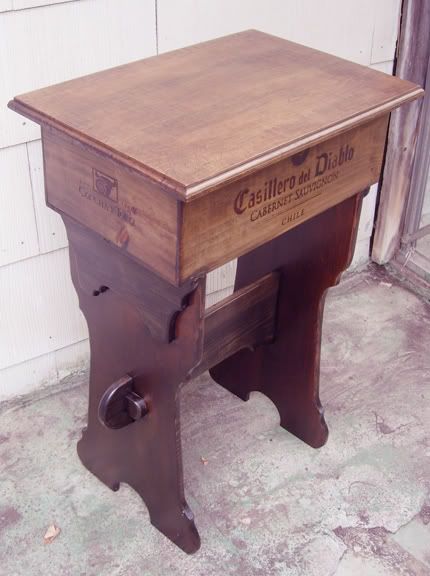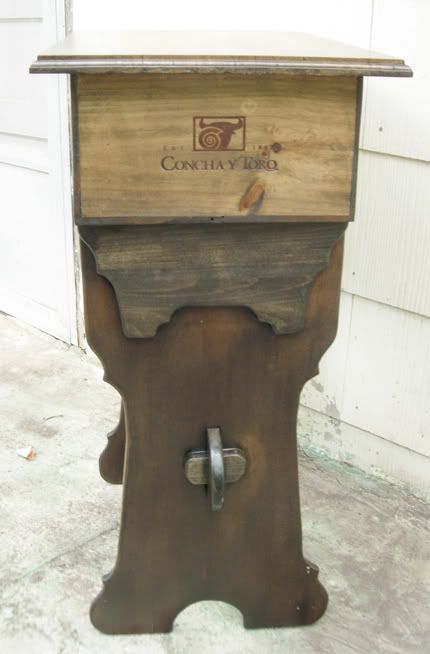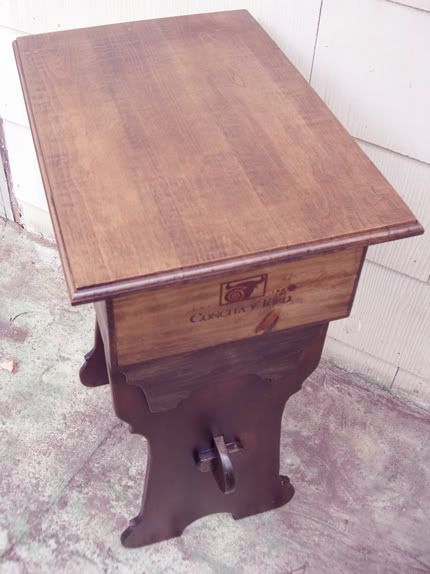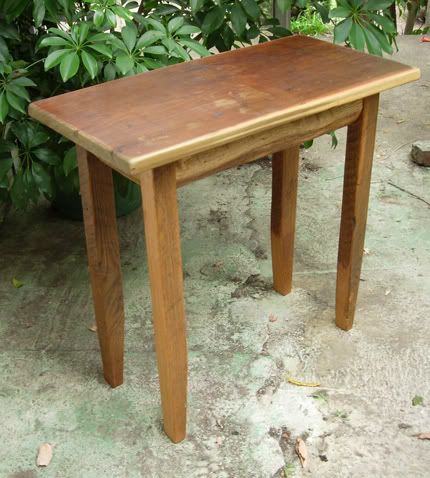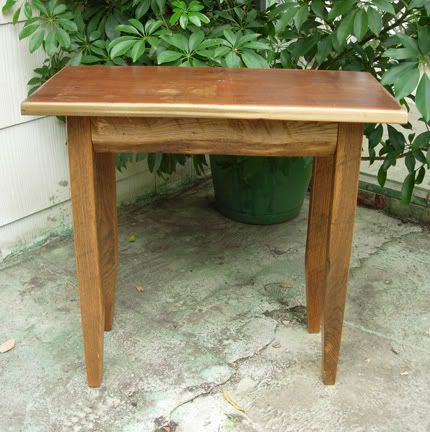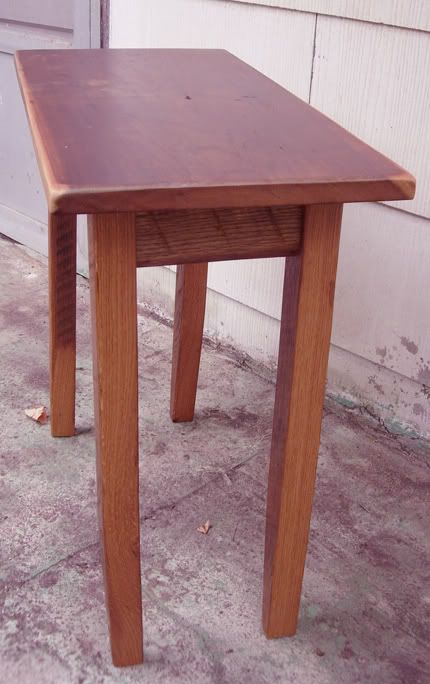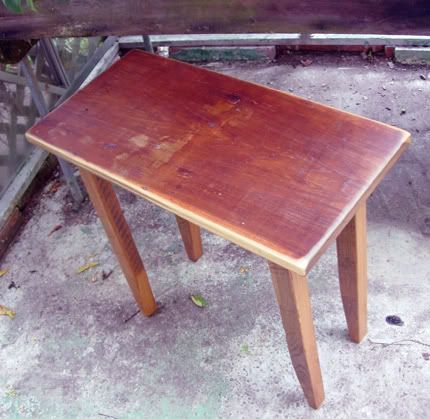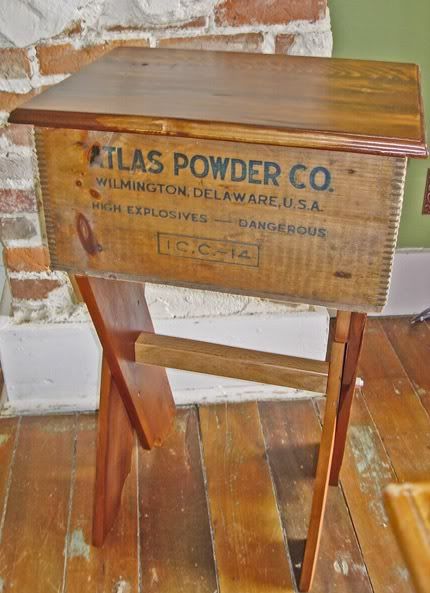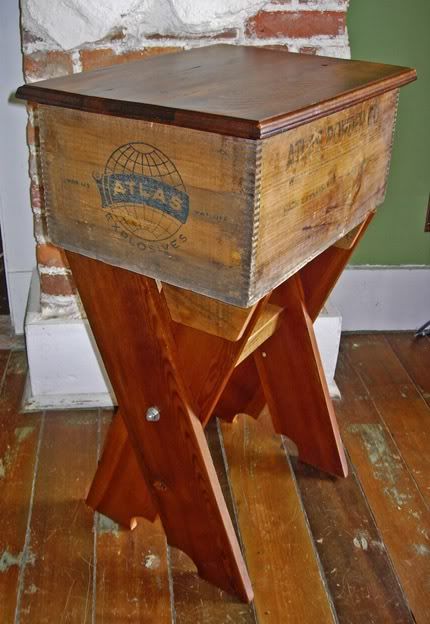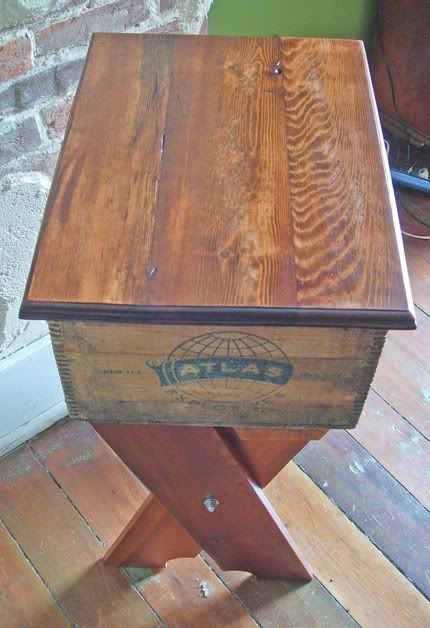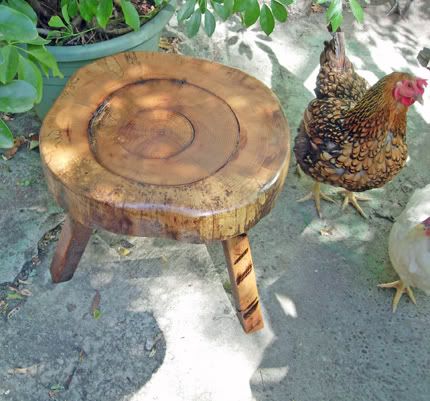
This is one of a pair of ash and white oak stools I did for the 2010 Monrovia fair. I had a bad feeling about the fair before hand and it proved to be so. It was a washout for me. So, I gave this stool to my brother for his birthday.
The top is a plate of ash from the same log I did the last set of stools from. I'll probably be able to get a few dozen stools out of it before I'm done. The legs are ripped from a roughsawn white oak 2x4 I salvaged. I only roughly smoothed and shaped them, leaving the major saw marks and signs of wear in place.
Ms Jaunty Beret, one of our gold wyandotte hens, came to supervise my photo session.
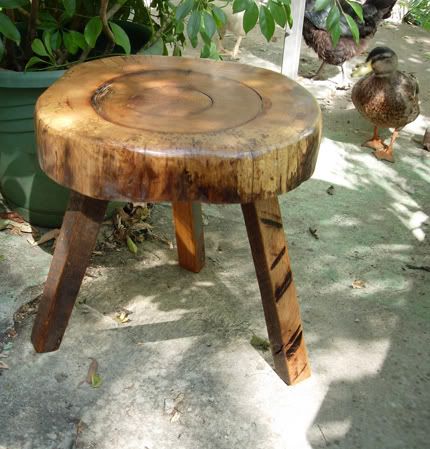
After Ms Jaunty Beret realized I had nothing to eat and left, her place was taken by Quaker Jack the mallard.
This is the same stool from a lower angle to show the legs a bit better. This stool has no stain, but several coats of spar urethane.
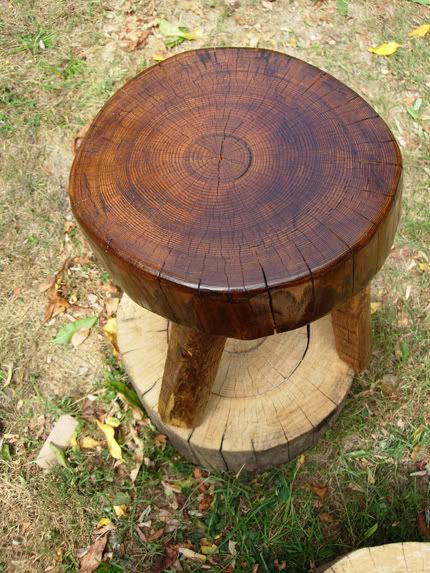
This stool is the one I thought would be interesting to rustic minded readers.
The stool is just like the one above, ash and oak, with a couple differances.
The legs are red oak instead of white. I cut them from an 8' 3x3 I found behind a dumpster in town. Probably from a shipping crate of some sort.
It's about an inch and a half taller than the stool at the top of the post, 18" surface height. This the most common height for dinning chairs.
The most interesting thing is the color though. I used no commercial stain on this stool. Instead I rubbed it directly with the green husks of black walnuts. The juice of the husks produce a powerful stain, and I've tried before to make a liquid stain from them, with limited success. This time I just twisted the husks off the nut and rubbed the juice into the wood by hand.
For the picture, I place the stool on top of a another section of ash from the same log, to show the difference in color between the unstained wood and the husk colored.
At first the stain colored the wood a yellow-green that wasn't so appealing. But I left the stool in the sun for a couple of days and it gradually changed into a very rich nut brown with gold high lights. I'm very pleased with the results.
I'm going to go collect enough walnuts for a big piece now. I'm thinking of a kitchen table. I'm still going to try and render or tincture the husks into a liquid base, but I have the feeling that I just won't get the deep color that hand rubbing with the husks has provided.
